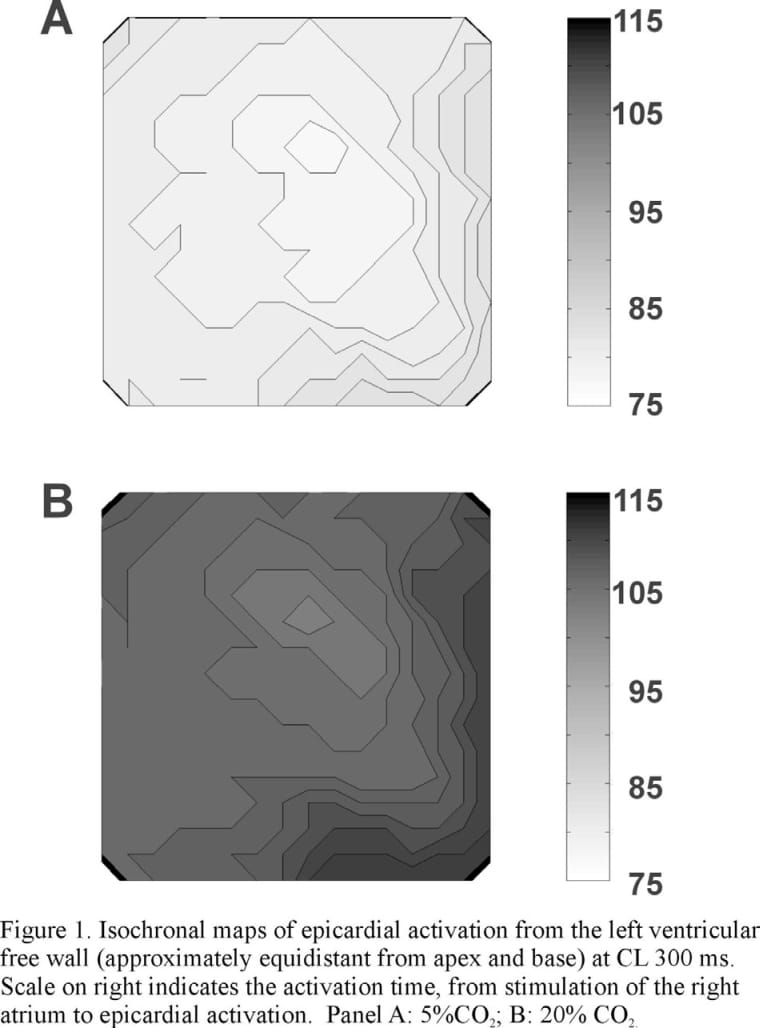Systemic acidosis and myocardial ischaemia are associated with decreased extracellular and intracellular pH. It has been suggested that this may alter action potential dispersion and conduction, and may thus be arrhythmogenic (Hulme and Orchard 2000). To test this hypothesis, epicardial activation was optically mapped during acidosis, using the voltage sensitive dye RH237. Hearts isolated from adult male New Zealand rabbits under terminal anaesthesia (1 mg/kg pentobarbitone) were Langendorff-perfused with Tyrode’s solution containing 3µM cytochalasin D to inhibit movement. Epicardial activation in a 2 x 2cm region of left ventricular free wall was recorded under control conditions (5% CO2; pH 7.4) and during acidosis (20% CO2; pH 6.7). The area studied was chosen to include a region of epicardial breakthrough.During pacing of the right atrium at cycle length
(CL) of300, 250, 200 and 150ms, acidosis caused a marked delay in epicardial activation with no obvious change in epicardial conduction (Fig. 1): at CL 250ms, under control conditions the time to earliest activation (Tact) was 99.3 ± 9.0ms (mean±sem, n=3); acidosis increased Tact by 24.3±5.5ms (124±0.8%; p<0.05; paired t-test). Decreasing CL to 150ms under control conditions increased Tact to 126.3±6.5ms (p<0.01), and acidosis further increased Tact to the extent that 2:1 block was observed in all 3 preparations. Pacing via epicardial-stimulating electrodes demonstrated that epicardial conduction velocity was unchanged (peak in control 70.6±12.9cm/s vs. 64.1±1.7cm/s in 20% CO2; NS).
Endocardial pacing failed to reveal any change in transmural conduction. These data suggest that moderate acidosis has little direct effect on epicardial activation, but prolongs Tact by slowing conduction at site(s) proximal to the ventricular endocardium, possibly at the A-V node, consistent with previous work on the effect of acidosis on the ECG (Aberra et al, 2001).

